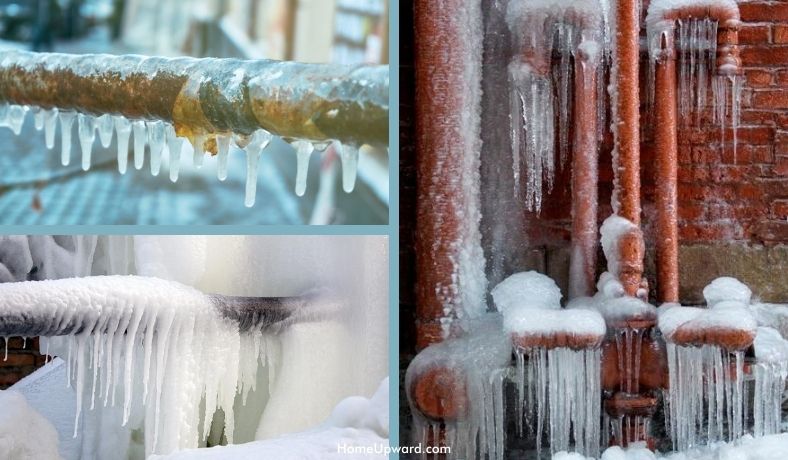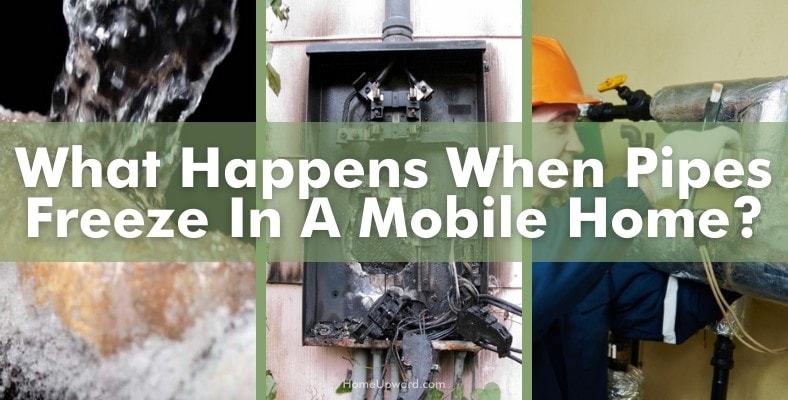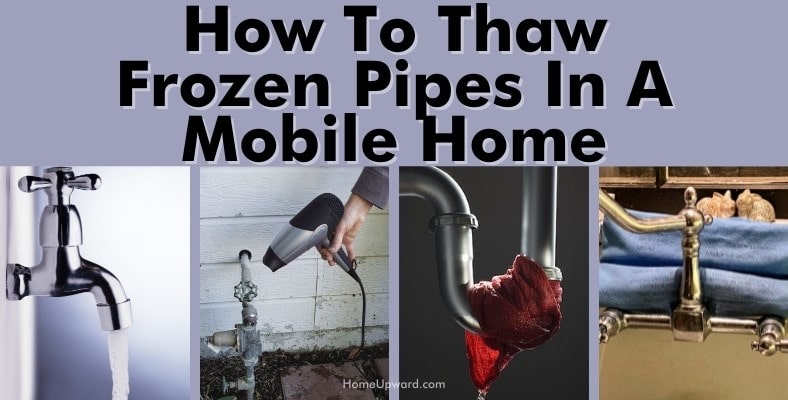Preventing frozen pipes is important no matter what type of home you live in. Unfortunately mobile homes face a higher risk of freezing pipes.
In this article you’re learn some great tips and ideas to decrease the risk of pipes freezing in your mobile home.
Contents
Preventing frozen pipes in mobile homes – what to do
Mobile homes normally don’t have a basement and there’s usually no insulation under these homes. If you live in a mobile home in a place that sees long stretches of freezing weather, it is important to continue to watch out to prevent your pipes from freezing.
Inspect and repair skirting
Some mobile homes, especially newer ones, have foundations. Others on the other hand only have skirting installed around the base of the mobile home. If your mobile home has skirting it’s important that the skirting is intact, not falling down, and doesn’t have any holes or openings in it.
Walk around the entire mobile home checking that the skirting is solid. If there are any spots that need repair or replacing, fix them so that the cold air won’t have a chance to get under your mobile home and to your pipes.
Wrap pipes in insulation or heat tape
Hopefully the pipes under your mobile home are already wrapped in insulation sleeves. If they are, check the insulation and replace or repair any that are sagging or ripped.
If the pipes under the mobile home don’t have insulation sleeves, add them. Make sure that these fit perfectly so that the wind can’t get to the pipes. Another option is to use heat tape. Wrap pipes in heat tape and then plug in the power cord.
Heat tape uses an electrical heating element to move heat to the pipes to keep them from freezing.
There are different types of heat tape, with heating cables that regulate themselves, being designed for freeze protection and cooling of pipes down to negative 40ºF. Make sure you read the installation instructions and follow them carefully to understand how the heat tape works.
Other tips
Also with repairing the skirting and adding insulation or heat tape, it’s important to watch the temperatures. Freezing pipes are the biggest concern when the temperature drops into the teens or lower.
When the temperature is expected to drop this low, it’s a good idea to leave one of your faucets dripping inside the house. This will help to reduce pressure in the line and keep water moving.
This can be an especially good idea at night when temperatures really tend to drop.
Also, be sure to cover your outside hose bibs with some kind of insulation wrap. There are many options, and if you didn’t have the chance to get to the hardware store, wrapping it in a blanket should help.
What happens when pipes freeze in a mobile home?
Water expands when it freezes, putting pressure on the pipes. If the pressure becomes high enough, the pipes will burst.
Bursting pipes creates a big mess that can include flooding and water damage. This can also damage the electrical system, which can be dangerous and costly to repair.
If your frozen pipes do burst, it’s important to first shut off the water supply of the home. This will prevent further water from flowing out of the burst pipe. Next, check your electrical system. If it has been damaged by water, turn off the electricity to your home at the breaker box and wait for professional help.
Call a company with experience in burst pipes and water damage to come help. This can be costly, so preventing it from happening in the first place is really the smartest thing you can do.
How to thaw frozen pipes in a mobile home
If the pipes in your home do freeze, but you have caught the problem before they have burst, it’s important to take action quickly. There are several things you can do to thaw the pipes in your mobile home.
Start by turning on the faucets in your house and note which ones don’t work. If the faucet is not working, the pipes that feed it are frozen.
Find access to these pipes and begin thawing them out. There are a few things you can try.
Use a hairdryer by moving it so that the heat is spread out over the entire length of the frozen section. Wrap rags that have been dipped in hot water around the pipes. As the rags cool, replace them with new hot ones until the pipe has thawed.
Wrap a grounded, water-resistant heating pad around the pipe. These are available from a local home improvement store, just be sure to read and follow all instructions. Never use a direct flame to try to thaw the pipes.
This can create a fire hazard and tends to make the problem worse.
Where to buy pipe insulation
You can buy pipe insulation at any major home improvement store. You can also order it online. Home Depot, Lowe’s, Ace Hardware, and Menards should all have pipe insulation. Amazon, Grainger, and eBay are all options if hoping to shop online.
Keep in mind that in addition to the pipe insulation, you will also need to buy something to hold the insulation in place. Some good options are duct tape or cable ties.
How to install pipe insulation
There are several types of pipe insulation, which include rubber foam, fiberglass, polyethylene, silicone, mineral wool, cellular glass, and more. Foam is the most popular because it is cheap and easy to install.
When installing rubber foam pipe insulation, you may need to first find the vertical seem where the insulation has been cut. Gently pull the insulation open and wrap it around the pipe.
Be sure to wear gloves so that you don’t burn yourself on a hot pipe. After wrapping the insulation around the pipe, secure it with duct tape or cable ties to keep it in place. Repeat this process with every pipe you hope to insulate.
How much does pipe insulation cost?
Costs will vary for pipe insulation depending on the material you choose. Foam insulation is the most popular and will cost about $2.80 for a 6-foot section.
Rubber pipe insulation costs about $7 for a 6-foot section. Fiberglass pipe insulation will cost around $14 for a 6-foot section. Mineral wool pipe insulation will cost close to $30 for a 6-foot section.





